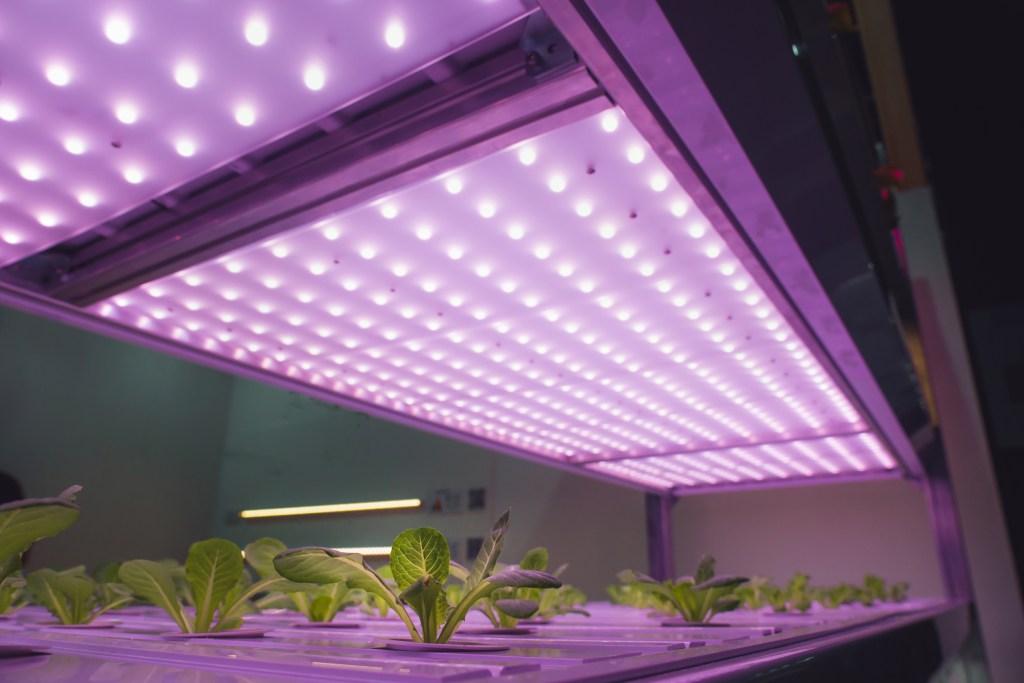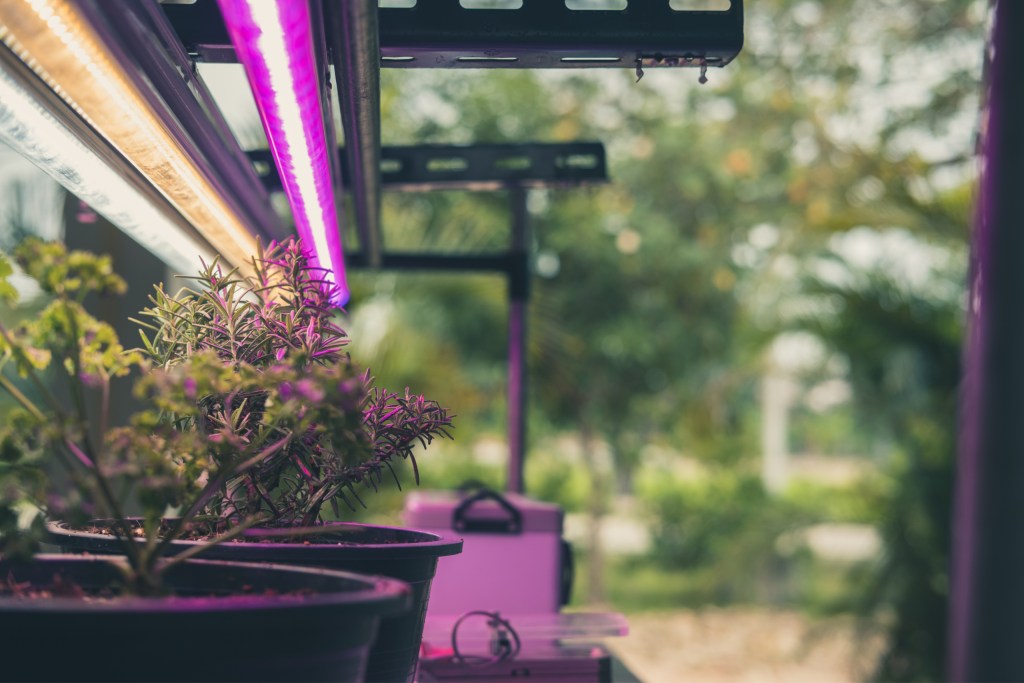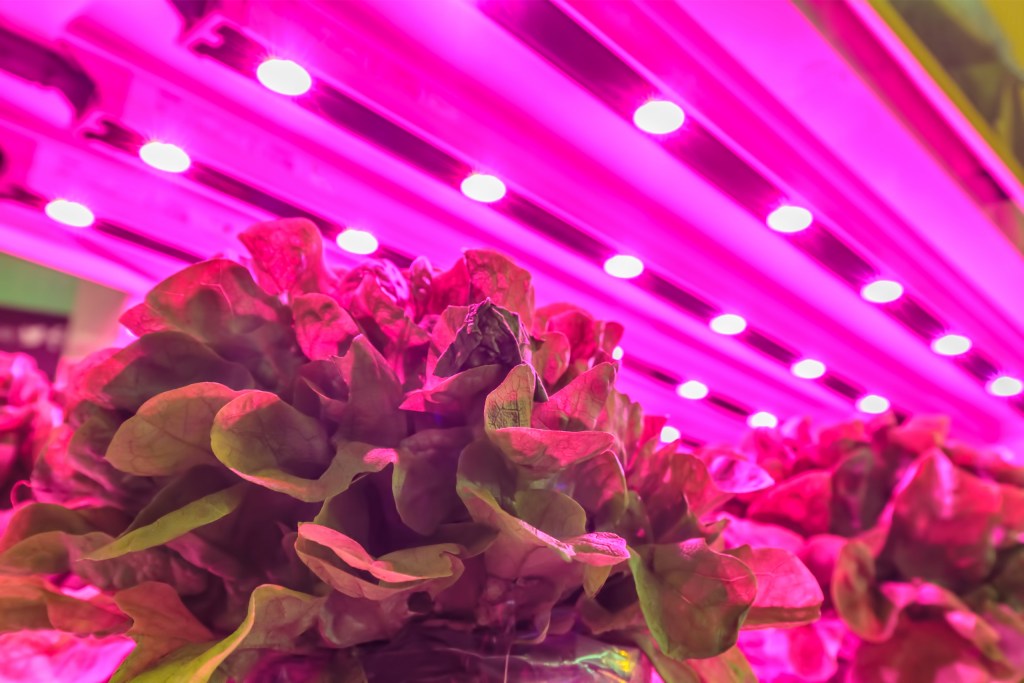One of the major components of growing any type of plant is light. However, giving your plants the proper amount of light can be a problem. This is where grow lights become almost a necessity — they can give plants the correct amount of light anywhere in a home or apartment (even in a creepy basement). With that being said, grow lights can be confusing for anyone not familiar with the terminology and the different types.
On top of that, grow lights have both positives and negatives when used in a greenhouse. When it comes to lighting in a greenhouse, natural light is the best, but greenhouses used in the winter may not be getting enough light, and your plants may need supplemental light; this is where greenhouse grow lights come in. Read on to learn the basics of grow lights and if they can be used in greenhouses.
What are grow lights?
Let’s go back to 10th grade biology class. Plants need light in order to photosynthesize; specifically, they absorb different parts of the light spectrum than what is visible to humans. Plants primarily use red and blue wavelengths of the spectrum. For grow lights, there are two major types of bulbs: incandescent and fluorescent. Right away, incandescent bulbs should not be used. They emit red wavelengths but not enough blue, and they produce far too much heat that can harm most plants. Not only that, but they are one-third less efficient than fluorescents, making you lose money in the long run.
Go one step further. While regular fluorescents are the way to go, emitting colors across the light spectrum, many are not strong enough for plant growth. Instead, go for fluorescent bulbs that are specifically made for growing plants that emit higher amounts of the red wavelength to compensate for the overly blue output of cool white fluorescents.

Different types of grow lights
Now that you know what grow lights are, it’s time to learn about the different types. Many people have different needs, including types of plants, size of the greenhouse, and amount of light getting into the greenhouse. Grow lights can also be used in combination with each other; you do not need to choose only one. There are many different types of lights, but here are three of the major ones:
- T-5 bulbs: These are full-spectrum fluorescent lights that can give off a high output. These use far less power than traditional incandescent bulbs and can be used for up to 50,000 hours.
- High-intensity discharge bulbs (HID): These are best used across a wide area, but be careful. HIDs need to be installed a good distance away from the plants as these bulbs can run hot. There are two types of HID bulbs. First, high-pressure sodium lights are glowing red lights that are best used for when plants are flowering and/or budding. Second, the halide is a bluish light that stimulates the plant’s growth.
- Light-emitting diode (LED): The most recent entry in the bulb battle, LEDs are the most popular choice for grow lights because they usually do better in all major categories — performance, energy efficiency, and lifespan. LEDs come in both blue and red lights, are lightweight, and consume 30% less energy than even flourescent lights.
Will grow lights work in a greenhouse?
Serious and quick-to-learn amateur plant growers may have invested in a greenhouse and are wondering if grow lights can be used in them. The good news is that grow lights can become a major asset to any greenhouse. The bad news is that some planning is required to avoid disaster. There are three things to keep in mind when buying grow lights for a greenhouse.
Grow lights can supplement light
A problem with greenhouses is that they can sometimes not get enough light, especially during the winter. When plants do not get enough light, they tend to grow higher, looking for more light. They can also become top heavy, and energy that usually goes to leaves and flowers instead transfers to the stem to keep it from falling, weakening the plant. Grow lights can prevent this by providing enough light.
They can also provide too much light
While plants can easily not get enough light, it can go the other way. During the day, plants absorb light and water to create starch and oxygen. Then, during the night, the plant converts the starch to sugar and stores it. One of the problems with grow lights in a greenhouse is that they can be left on too long, compromising the health of the plants. Too much light can make the plants become pale, even sunburned. To avoid this, turn off all grow lights at night so the plants get roughly eight hours of darkness for health maintenance.
Properly distribute grow lights
A common problem with grow lights in greenhouses is that people tend to unevenly distribute them. This makes some plants grow well while others lag behind. While different plants can have different light requirements, in general grow lights should emit 20 to 40 watts of light per square foot. The light should also reach all leaves on every plant; make sure not to space the plants too closely or the leaves will block the light from other plants.
When it comes down to it, grow lights are not that hard to understand but do require planning before implementing them into a greenhouse. Different types need to be chosen based on the plants, size of the greenhouse, and spacing. While there are negatives to using grow lights in a greenhouse, with proper foresight anyone can use them to improve lighting and make their plants properly grow.
Editors' Recommendations
- A beginners guide on what to grow in your greenhouse for a thriving garden
- Small greenhouse tips: 5 ways to make the most of limited space
- The ideal greenhouse temperature and humidity settings for every season
- 5 fantastic backyard design apps to help you craft your own personal oasis
- What you need to know about growing sugar snap peas in containers




